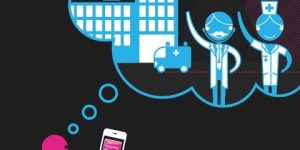
August 3, 2015
The Internet of Things (IoT) is turning many manufacturers of “things” into first-time software vendors that need licensing and entitlement management (LEM) solutions, according to Gartner, Inc. By shifting product value from device hardware to the software running on the device and applying an appropriate licensing strategy, manufacturing product strategists can maximize revenue potential.
“The IoT is creating a new type of software vendor for whom LEM is vital to protect, differentiate and monetize their offerings,” said Laurie Wurster, research director at Gartner. “We expect that by 2020, a failure to put in place a LEM system will result in a 20 percent drop in potential revenue generated from software for device manufacturers connecting to the IoT.”
The issue is that many makers of “things” still apply a traditional “box” mentality to products and do not consider the extra revenue opportunities of licensing-controlled embedded software and applications. Most of these companies are first-time software providers, mainly device manufacturers and OEMs that can now monetize their software as well as the devices via the IoT. For these companies, the IoT represents a significant market opportunity.
By monetizing the software on their devices, these vendors will be able to increase and drive recurring revenue streams, creating billions of dollars of additional value. For example, with an estimated 25-plus billion ‘things’ in the marketplace, and if manufacturers are able to collect an average of $5 for software from each of these installed units, that translates to additional revenue estimated at $130 billion.
For the foreseeable future, the IoT will drive business transformation for many device manufacturers, enabling them to use software on the device to differentiate product and solution offerings. Like vendors in the traditional software industry, device manufacturers need to protect and monetize the intellectual property (IP) contained in applications. They can do this by adopting LEM systems that control access to the Internet-connected device, its functions and its features. LEM also enables flexible pricing and packaging, allowing manufacturers to bundle product features, capabilities and capacities, ensure payment, provide verified upgrade paths and create new revenue streams.
“By controlling product functionality and the features and capacities of Internet-connected devices via flexible licensing, device manufacturers will be better able to compete in current and new markets. They will also be able to come to market quicker with new products, new feature combinations and product enhancements,” said Ms. Wurster. “Moreover, software-controlled configuration gives manufacturers more flexibility to regionalize their offerings and develop niche solutions for specific markets without having to manufacture separate product stock keeping units (SKUs). Overall, this reduces the number of SKUs produced, lowering overall manufacturing costs while enhancing manufacturers’ ability to customize and regionalize products.”
The vast majority of device manufacturers do not have, or have yet to implement, commercial LEM systems to monetize the IoT. This is because, historically, they had little or no software IP to protect. Initially, they will look to build LEM capabilities in-house as they already have a technical and engineering background that developed the hardware, and they often believe that these internal resources can also build an efficient LEM system.
“For some, recognizing the need for a LEM solution is a viable first step. However, manufacturers are starting to question the wisdom of diverting high-value resources to developing and maintaining LEM systems,” said Ms. Wurster. “As the need to scale and react quickly to changing market conditions increases, manufacturers may eventually start to buy packaged solutions. Providers of commercial products continue to broaden their set of capabilities and invest in support for new licensing models. This makes these solutions an attractive alternative for device manufacturers that do not want to build and maintain in-house LEM software.”







